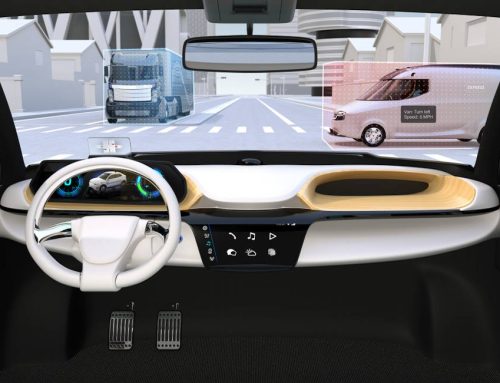Pickup and delivery drivers who learn how to put the best practices of safe driving to work every day keep roads safer and help fleets avoid the costs of crashes and collisions, including the threat of nuclear verdicts.
Few issues are of more importance to fleets. A driver who uses the right strategies and techniques for safe driving is a valuable asset. Conversely, one who does not is a high risk. That’s why teaching pickup and delivery vehicle safety tips – coupled with P&D vehicle compliance solutions – are of critical importance to fleets.
Nowhere is this more evident than in the rise of nuclear verdicts from juries in lawsuits involving truck crashes.
What’s a Nuclear Verdict?
Most experts define a nuclear verdict as a jury award that exceeds $10 million. However, others define it as any jury award in which the amount is disproportionate to the actual economic damage caused in the case.
Nuclear verdicts have become more common in recent years, including those for crashes involving commercial fleet vehicles. CNBC reports that the average size of a jury award of more than $1 million in lawsuits involving trucks increased from $2.3 million in 2010 to $22.3 million in 2018.
The trend of more nuclear verdicts also has led to much higher insurance prices for many fleets.
P&D Delivery Safety Tips
Pickup and delivery vehicle safety tips have increased in importance as a way to avoid crashes and the nuclear verdicts in which they can result. More fleets than ever have moved toward adopting a written safety policy that addresses P&D vehicle safety tips. Some of the most common tips include the following.
- Check blind spots. Changing lanes without checking traffic causes about 40 percent of collisions. P&D delivery drivers should check traffic as well as use mirrors to look at blind spots.
- Avoid distracted driving. Distracted driving is one of the top causes of crashes. Common actions that cause distracted driving include loud music, texting, reading billboards, eating and drinking behind the wheel.
- Drive within the speed limit. Speeding also is a top cause of crashes because driving too fast reduces the precious seconds pickup and delivery drivers need to avoid a collision.
- Plan ahead. Working with route dispatchers, P&D drivers should choose their routes in advance, picking the safest and least congested path to their destination.
- Maintain a safe distance. Pickup and delivery drivers should maintain a distance from the vehicle in front of them that allows them plenty of time to take action to avoid a collision if the other vehicle suddenly stops or greatly reduces its speed.
- Watch for pedestrians and cyclists. This is an especially important issue for P&D drivers who operate in urban or more populated areas where pedestrians more often enter the roadway.
In all these areas, advanced software offers a wide variety of important safety systems, including forward collision warning, lane departure warning, pedestrian detection, speed limit indicators and automatic braking to avoid crashes. Coupled with the practice of pickup and delivery vehicle safety tips, these systems help P&D drivers perform their jobs safely and efficiently.









